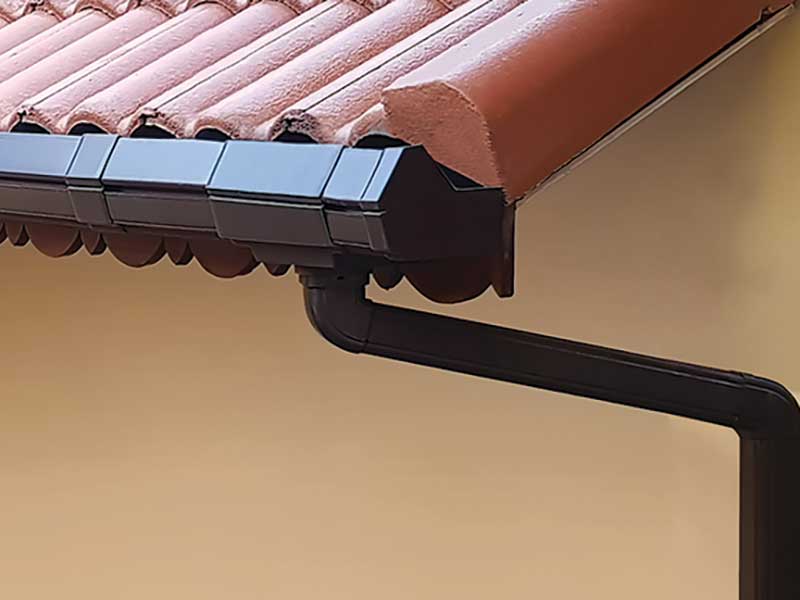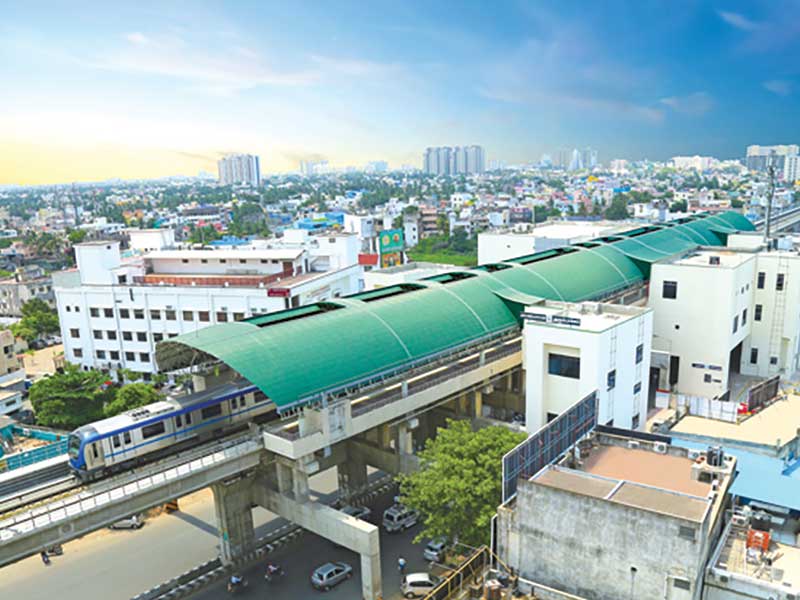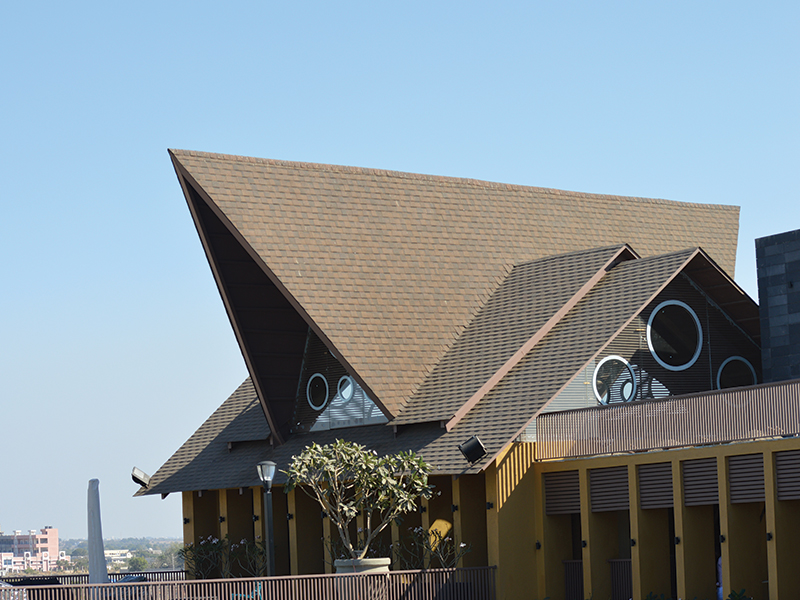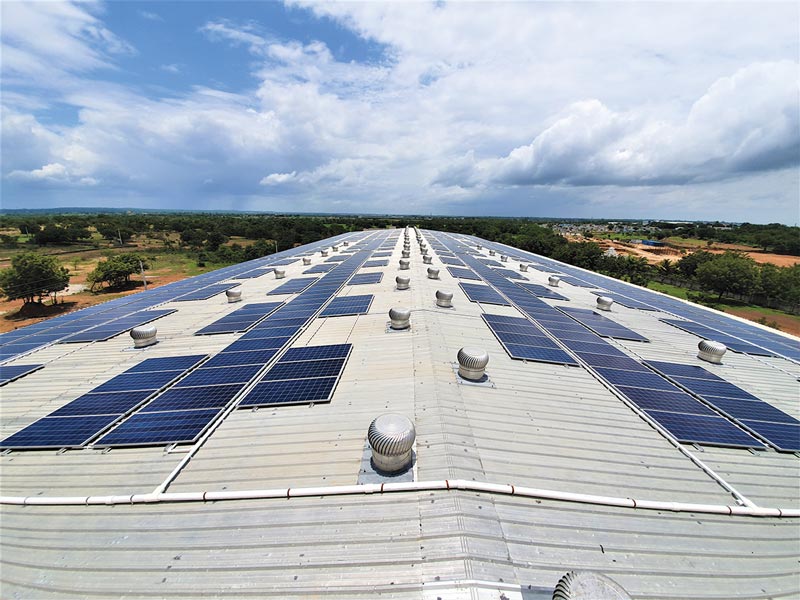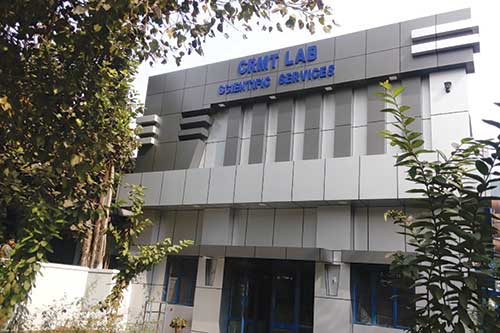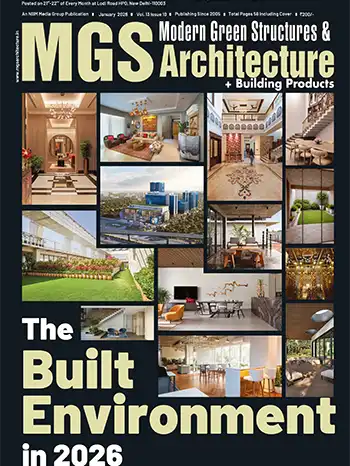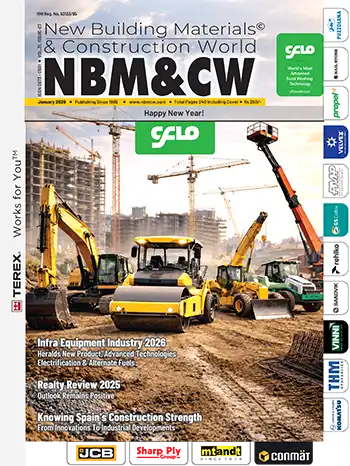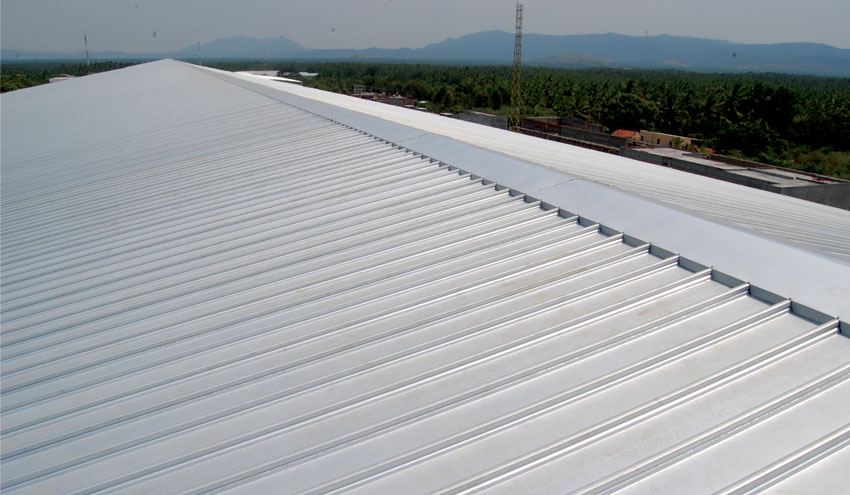
Mukta Naik takes a look at how metal roofing and cladding products are changing the way Indians build as much as the way we look at the built form, in a two part series. Part I looks at why metal roofing and cladding is so popular.
Colored metal roofing and cladding are no longer an anomaly in the Indian construction landscape. The material dominates industrial areas and can be seen intermittently in nearly any urban landscape picked randomly in the country, from Mumbai to Behrampur, and Kolkata to Trichy. For a material that had few takers a decade ago, metal for roofing and cladding has become a default choice in a country where infrastructure and private enterprise are expanding rapidly to meet the needs of a growing economy and rising population.
To a large extent, the growth of metal roofing and cladding reflects the overall increase in the infrastructure being built, which in turn reflects demand. To cut a long story short, the material's tale mirrors India's economic growth story, but it is important to note the details.
History
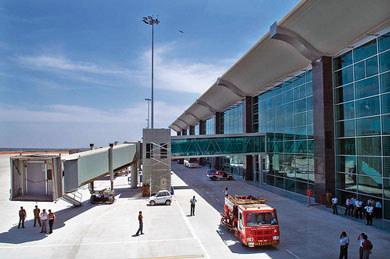
Britain's colonies were the early beneficiaries of this invention. Soon, structures across North America, Australia, Chile and India were being roofed using corrugated iron roofing sheets. As the British Empire expanded and increased its control over the country, metal roofs played an important part in establishing a quick and strong military presence in the remotest parts of India. Even today, these ancient structures are still visible, though in disrepair and in need of refurbishment. Surprisingly, the metal roof on some of these is still intact, even though corroded with the onslaught of natural elements over time.
Material march
By the last decade of that century, which also saw the spread of industry across the world, corrugated sheets were being made from mild steel instead of wrought iron. As man advanced technologically, the material changed to galvanized steel and finally steel coated with a 55% aluminum-zinc layer to prevent corrosion. These coil-painted sheets also started being made in complex profiles finally resulting in the highly automated and productive roll forming process that is used even today. The profiles are different by the use of different dies in the roll forming process. In terms of materials, not just ferrous alloys and stainless steel, but also copper and aluminum are used to manufacture sheets for roofing and cladding today.Mirroring progress
In recent years, more than in the first decade of liberalized growth—the ‘90s—infrastructure has been a focus area rather than overall economic growth. The result—huge amounts funds have been pumped into building airports, warehouses, special economic zones and free trade areas, ports, software parks, and industrial parks. The sheer speed of construction demanded the use of new materials and products that could meet the challenges that faced them, the ability to build well in a short time span. Herein, lies the secret to the success of metal roofing and cladding products, in the Indian scenario.Once industrialists and transporters, governments and technologists saw the wondrous new language of fast-track construction, they were addicted. What's more, the new technology offered a vastly superior aesthetic, with colored metal providing vast number of pleasant options.
Global roofing demand
Today, the world is looking at a roofing demand of 9 billion square meters of roofing alone by 2010. That figure represents a market size of $54 billion. A calculated guess would place a third of this, as being satisfied by metal roofing materials and technologies alone.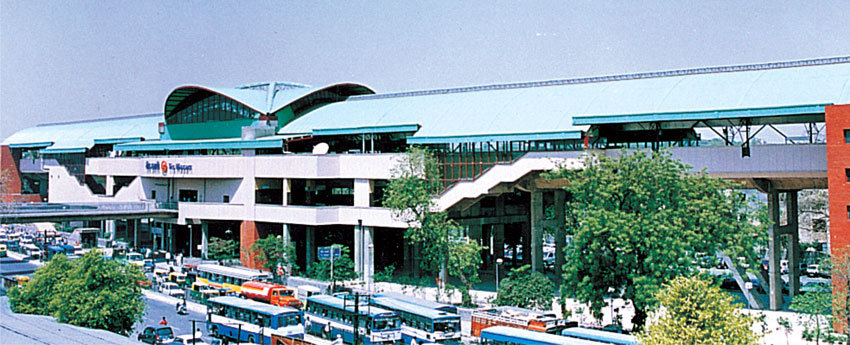
India and China, according to industry reports, drive this growth as new construction in volumes is happening here. However, what is notable is that while the global growth rate for roofing demand has only been about 2 percent, the real growth has been in terms of the move to more aesthetically pleasing and durable materials. In India too this is apparent, as we less of the drab RCC or asbestos-cement roofs or GI roofing.
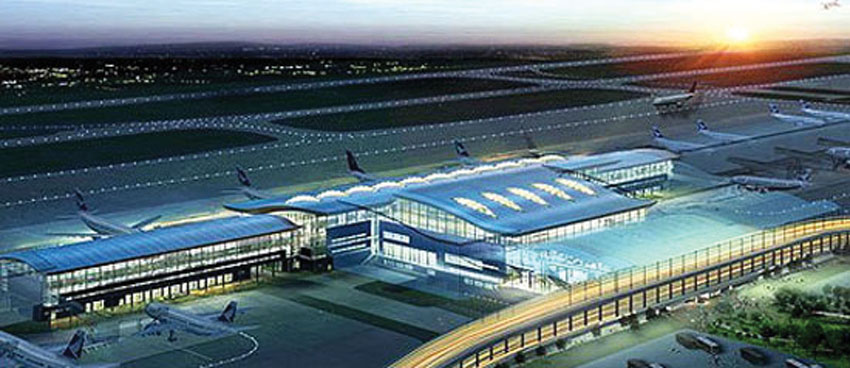
Says A K Mitra of Color Roof (India) Ltd (CRiL), speaking specifically about the Indian market, "Over the last three years and more particularly, in the last year or so, growth in permanently color coated metal roofing and cladding has been exponential. After almost two decades of struggle, India has suddenly embraced colored metal cladding systems with vengeance."
Advantages
The reasons are not hard to understand. As opposed to conventional built-up walls and fabricated roofing, metal roofing and cladding offer several advantages.Strength and corrosion resistance
Most metal roofing products are made of steel or aluminum, although some also have copper and other metals. Steel is invariably galvanized by the application of a zinc or zinc/aluminum coating, which greatly reduces the rate of corrosion.These materials are far stronger than wood, RCC, stone shingles or even regular galvanized iron, which were used traditionally in roofs. For cladding as well, the anti-corrosion properties protect metal-clad buildings from rain damage and it is possible to have a nearly maintenance-free and hassle-free structure.
Durable
Strength and corrosion resistance translate into durability, an important consideation for the client who is spending a substantial amount putting up the structure and needs to ensure it lasts for the longest possible time. Says Umang Nangia, a Ludhiana-based structural engineer, "Metal roofs are very durable because they are strong, can tolerate the weather elements like rain and sun very well. Above all, they are waterproof and that really helps in keeping the structure safe and sound and away from damage. As a corollary, structures with metal roofing and cladding are also very safe, which is why they have become a default use for public buildings the world over." In India as well, new airports and railway terminals and even malls are using metal roofs.Light and fast to construct

"The short fabrication time is the single largest advantage of metal roofing and cladding that has caught the imagination of the Indian client," says the marketing manager of a Delhi-based metal fabrication enterprise. "The shorter time-to-market is very attractive for factory and workshop owners, car dealerships, stand-alone retail outlets, warehouses and storage godowns and indeed any other large-span non-residential use," adds Arti Chhabra, an architect who has recommended metal structures with metal roofs to numerous industrial and retail clients in the Gurgaon and Faridabad areas.
Attractive, no barrier to design
Metal roofing is available in a variety of profiles and systems that lend themselves to a wide variety of designs. It is important, though, to consult an expert who can advise which system is ideal for a particular application.Metal roofing and cladding products also come in a variety of styles and colors and this has caught the imagination of architects across the country. In combination with aluminum panels and value-added glass, metal roofing and cladding products can guarantee the clean international look.
Easy to understand
The best part of a metal roofing or cladding system is that it is easy for a lay person also to understand the mechanism behind it. There would be inherently three aspects—a structural framework, a metal profile available in sheet lengths, and an interlocking or clipping system that holds the profile sheets together.Plenty of choice
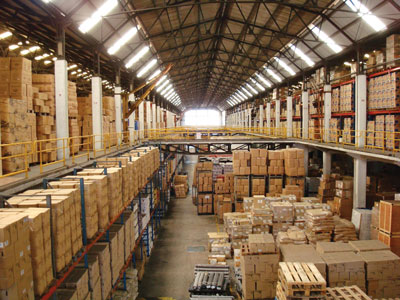
For instance, Tata Bluescope Steel's Lysaght® system offers the KLIP-LOKTM mechanism that is particularly suitable for situations where long lengths need to be roofed and clad. The system combines fluted pans with a lock-action rib design and has concealed fastening. This means the roof sheeting does not need to be pierced and the ribs make the profile stronger.
Other brands like Multicolor Steel, Metco Roof Pvt Ltd, Era Building Systems Ltd, Proflex Systems, CRiL and many others manufacture and erect metal pre-engineered buildings across the country today. Most of these companies have developed a large amount of expertise in this area through years of experience in putting up structures. In fact, their experience has been channelised into improving their product range to offer customers better systems over the last decade.
There is a downside though. Says AK Mitra, "As with any market, sudden exponential growth finds plenty jumping on to the bandwagon. While this helps further and further penetration into markets, it also has a flip side on qualitative issues. This is happening to colored metal cladding in India. With the commoditisation associated with burgeoning growth, the quality issues have been blurred, if not totally relegated into oblivion. Most volume growth happens in low quality, low end products where anything in metal that has color on it garners maximum market share. Cheapness dominates and volumes are driven."
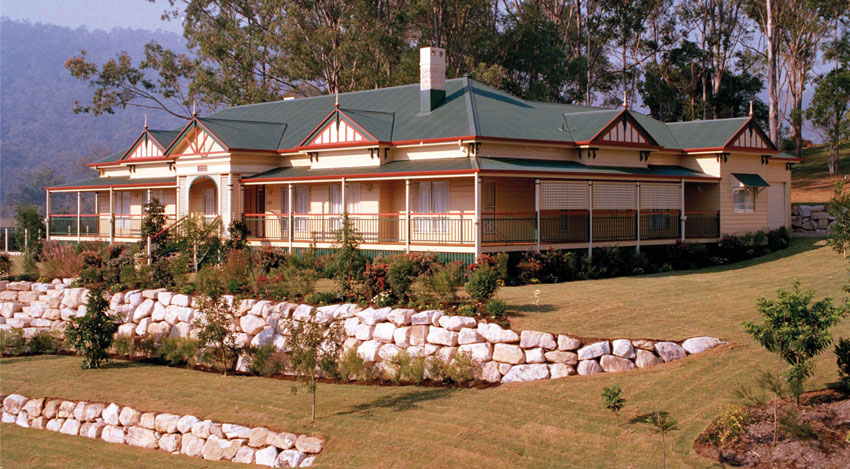
However, the future is strong and bright for this segment, as is demonstrated by the recent entry of steel majors like Bhushan, JSW, Essar and the old hand Ispat into the game. These large volume steel makers have turned to trade oriented markets where volumes are order of the day and therefore color coated metal sheets have been gradually converted into the same channels as HR, CR and GP/GC material. Tata Bluescope Steel has also joined the bandwagon with their DurashineTM range of sheeting. These factors have really been the major driver for the growth and penetration of colored metal sheeting, according to expert inputs provided by CRiL's AK Mitra.
In Part 2 of this series on metal roofing and cladding, we will explore the specific characteristics of the Indian market for these products, how the market has evolved and showcase some recent work from pioneering brands in the field. Needless to say, the stage is set for the continued growth and evolution of these products and the education of the Indian consumer is a key factor in this process.






